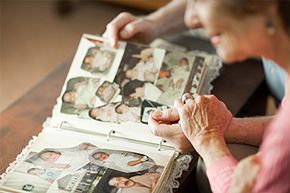Nostalgia and Your Brain
External triggers for nostalgia are easy to recognize. Looking at old pictures, reminiscing about old times or meeting up with a long-lost friend will all get you to wistful longing.
Less obvious, people seem prone to nostalgize when they're feeling cold [source: Zhou et al.]. We'll get back to that.
Advertisement
As far as sensory triggers go, music is powerful, and songs from adolescence and young adulthood are particularly so — a fact not lost on advertisers, who infuse commercials for everything from cars to yogurt with tracks that their target audiences grew up with [source: Elliot]. Experts theorize that music from this period of our lives is most strongly associated with emotional memories due to properties of the adolescent brain [source: Stern]. The neural activity activated by a song we like, which causes the release of "feel-good chemicals" like dopamine, is activated to a greater extent between the ages of 12 and 22. That extra-intense reaction becomes associated with the events and emotions going on while the song plays. And the emotions going on while the song plays are extra-intense, too, a result of all those "raging hormones" at work in the brain [source: Stern].
Not a lot is known about the brain's role in nostalgia, but it seems to involve connections between stored emotions and memories [source: Ostashevsy]. Researchers have connected music-triggered nostalgia with increased activity in the prefrontal cortex, which is activated when we retrieve autobiographical memories [source: Janata]. Tastes may induce nostalgia in part because the neural pathways carrying information from the taste buds ultimately lead in part to the limbic system [source: Murray]. Scent data lands there, too.
The limbic system, which includes the hippocampus and amygdala, plays a role in the processing and storage of memories (hippocampus), emotions (amygdala) and the "emotional memories" that result when a memory is stored during a highly emotional state [sources: Ostashevsy, Phelps, Levit]. Scent seems to elicit a stronger sense of nostalgia, as well as a more positive and emotional episode, than other triggers [source: Reid]. Might be because the olfactory bulb, which processes smell data from the nose, is right in the limbic system. It has direct links with the amygdala and the hippocampus [source: NBC]. Scents hardly have to travel at all to reach our stored emotional memories.
We typically think of nostalgia triggers along the lines of these types of sensory inputs. Yet one of the most common nostalgia triggers has no sensory component at all.
